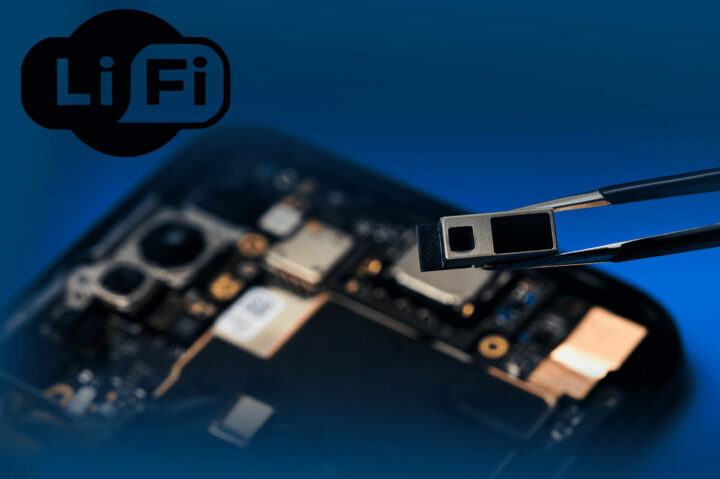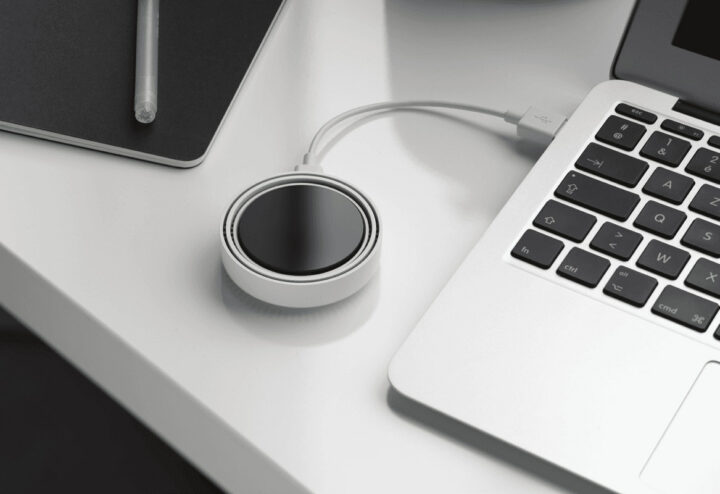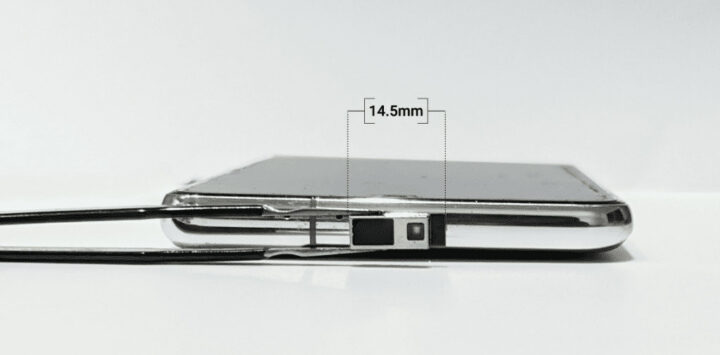The 802.11bb WiFi-like standard, also called LiFi, was ratified in June 2023. It enables data transmission up to 224GB/s at a few meters range within a room using light instead of RF signals used in most other wireless standards.
The technology has been worked on for many years, and we first covered (a version of) LiFi in 2014 that was still part of the IEEE 802.15 standard with speeds up to 1 Gbps. But the Light Communications 802.11bb Task Group was only formed in 2018 chaired by pureLiFi and supported by Fraunhofer HHI, and led to be ratification of the IEEE 802.11bb standard last month.

In a typical LiFi setup, you’d have a LiFi-capable router connected to your local network and the Internet, a LiFi-enabled light bulb on a ceiling, and one or more LiFi receivers. From the end-user perspective, it would work like accessing a WiFi access point. We’re told that “light’s line-of-sight propagation enhances security by preventing wall penetration, reduces jamming and eavesdropping risks, and enables centimeter-precision indoor navigation”.
Let’s have at pureLiFi Light Antenna ONE module key features:
- Data Rate – Over 1 Gbps+
- Range – 20 to 300 centimeter
- Tx Field of View – 24 degrees
- Wavelength of Operation – 850nm ± 10
- Baseband – Agnostic
- Channels – Single or Multi-channel
- 300Mhz Max frequency support
- Compliance – 802.11bb Light
So for this specific module at least, you’d have to be no further away than three meters from the light, and the Tx FoV probably means you can’t just leave your phone on a table to stream music. If the module is meant to be placed on the top of the phone as shown below that also means it would not be suitable for extra slim phones.
So it looks like the main selling points of LiFi are security/privacy and centimeter-accurate indoor location support, although WiFi RTT (802.11mc) is also an option for that. The data rate can be much higher too as explained on the LiFi website:
It uses common household LED light bulbs to enable data transfer, boasting speeds of up to 224 GB per second. Considering that the fastest WiFi in the 60 GHz frequency band, WiGig, can achieve a maximum data rate of 7 GB per second, LiFi speed is 100 times faster than that! Not only that, but the rate per square meter or area data rate of a LiFi network can be 1,000 times higher than the area data rate of a WiFi network.
I’m not sure how 224GB/s is 100 times faster than 7GB/s, but leaving that aside, the LiFi module above delivers around 1 Gbps, so in practical terms, it’s similar to WiFi 6 in terms of performance at this time. It’s also possible to provide high-speed connectivity in an office without rewiring, and you could just install LiFi LED bulbs across the office or classroom, and in this case, it might be faster than WiFi (TBC).
Applications that may benefit from LiFi include augmented reality (AR), virtual reality (VR), and gaming with ultra-low latency, government agencies, hospitals, and companies that may need an extra level of security or privacy with critical data, and sectors such as the aerospace industry that want to remove RF wireless interference.
More details may be found on the official website (including some WiFi products like tablets, Lightbulbs, USB adapters, devkits, etc…) and in the press release.

Via Tom’s Hardware

Jean-Luc started CNX Software in 2010 as a part-time endeavor, before quitting his job as a software engineering manager, and starting to write daily news, and reviews full time later in 2011.
Support CNX Software! Donate via cryptocurrencies, become a Patron on Patreon, or purchase goods on Amazon or Aliexpress. We also use affiliate links in articles to earn commissions if you make a purchase after clicking on those links.







I’m not an expert, but I believe that light is, in fact, part of the EM radio wave spectrum just like wifi signals. It just happens to be the small slice that we are equipped to see with our eyes .. presumably, they could use any part of the spectrum with enough r&d. 🙂 Why visible light specifically?
Curious if this also means you can’t use your phone in the dark.
The Li-Fi could use the IR brand.
They say It works almost dark conditions as the LED bulb can be dimmed down to 10%.
When looking at https://lifi.co/lifi-products/ several ‘solutions’ rely on IR (940nm in contrast to the 380–750nm most human eyes would perceive as ‘visible light’), some rely on visible light + RGB modulation but ‘LiFi signals are susceptible to light interferences, including sunlight’.
The products shown there show surprisingly low bandwidth promises (150 Mbps down to 23 Mbps) while prices and handling prohibit the use of this tech experiment.
I hadn’t given it much thought, but I think there’s a problem with the data on LiFi website. They talk about WiFi going up to 7 GB/s (56 Gbps), but even the latest WiFi 7 is only designed for up to 40 Gbps. So I wonder if they mean 7 Gbps and 226 Gbps instead.
“Why visible light specifically?”
You are correct that visible light (visible means it can be detected by the human eye) is an electromagnetic wave and it has a frequency ranging from very approximately 480 THz (red) to 750 THz (purple). (T = tera = 10**12)
In transmission of electromagnetic waves, the higher the frequency, the more bandwidth that is available. Consider AM broadcasting — the standard broadcast band is from 525 kHz to 1705 kHz and radio stations can use approximately 9-10 kHz bandwidth for transmission using amplitude modulation (AM — carrier with two sidebands). Once you get up to UHF frequencies, 300 MHz – 3 GHz, the allocation of channels for TV broadcasting can be from 5 to 8 MHz (depending on continent) because of the wider frequency range available. WiFi signals are in the 2.4 GHz or 5.0 GHz range and the channel allocation is 20 MHz with 40 MHz and 80 MHz also being possible in the 5,0 GHz range. The wider the channel, the more data can be transmitted at an given instant and the more data transmitted per instance is in common parlance “higher speed”. So once you get up to the visible light range, there is the possiblity of each channel using a larger slice of the the spectrum.
The advantage of using visible light is that it is easy to generate from well established technologies (eg fiber optic technology) and so long as it is not too bright there is a minimal health hazard only affecting the eyes. Use of frequencies above and below visible light would introduce potential health risks: infra red burning of the skin, and ultra violet causing skin cancer. Once you get above UV, the costs of generating the electromagnetic waves of those frequencies become incresingly great and there is the increasing potential health damage in exposure to the radiation. as is well known with X-rays at even higher frequencies.
So using visible light is an excellent frequency range to use for these short path transmissions with minimal health hazard to users.
Yeah we all know the severe burns from IR remotes, really thankful they are now banned worldwide 😀